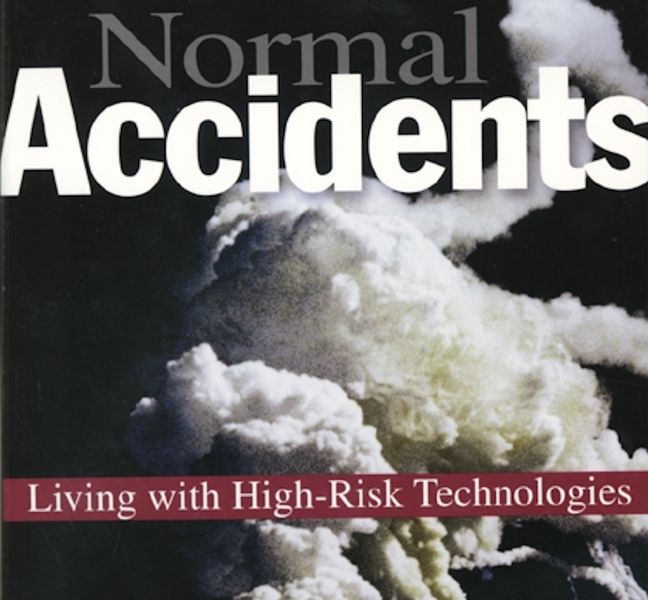
This week’s selection is “Normal Accidents: Living with High-Risk Technologies” by Charles Perrow.
This book, as you might guess, is about accidents in systems. In theory, accidents should never happen because designers surely must have taken them into account when designing the system.
Or did they?
Perrow’s point here is that while it is relatively straightforward to identify and mitigate problems in simple systems, the problem becomes nearly impossible to solve when system become more complex.
Systems might be composed of mechanical, thermal, electronic, process, or other aspects. The more pieces that are involved, the more complex the system. Perrow’s position is that at a certain level of high complexity, the system’s problems can no longer be predicted.
He makes the case by describing several complex failures of the past, such as a Space Shuttle incident, and the Bhopal chemical disaster. In each case notably complex systems failed in ways that no one had predicted, in spite of considerable planning.
In complex systems, failures often cascade. One aspect fails, but then generates a complementary failure, which leads to more component failures. These branching failure scenarios can be incredibly complex and thus unpredictable. If something can go wrong, it will go wrong.
Perrow proposes a framework by which these complex system can be understood, at least to some degree.
Readers may be involved in the design of complex systems and thus benefit from this perspective. Even those designing less complex systems on their own could gain new ways of looking at their design. This could improve the design in unexpected ways.
We’re an Amazon Associate and earn a small fee from qualifying purchases. Help support our 3D print news service by checking out this book!
Via Amazon
